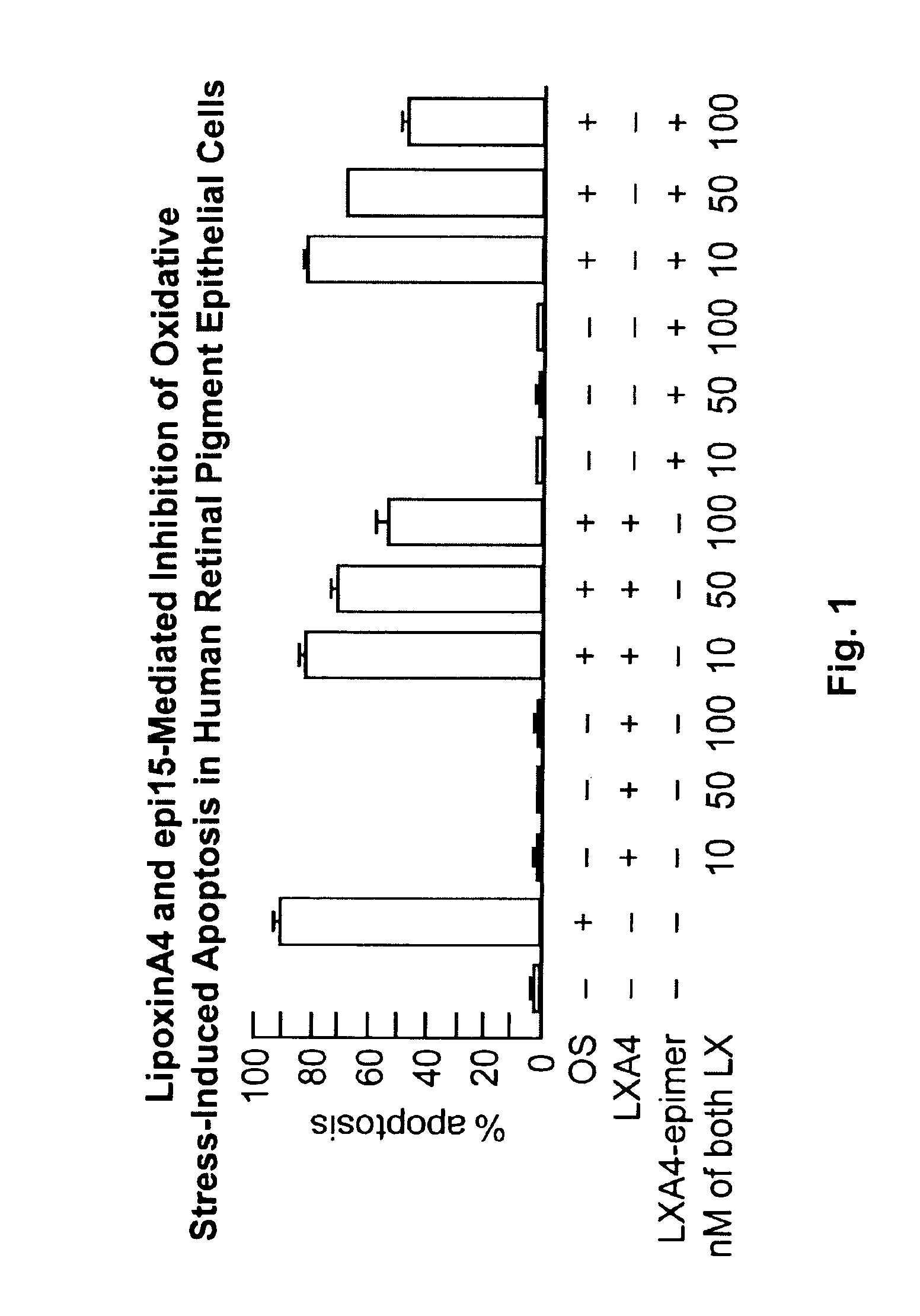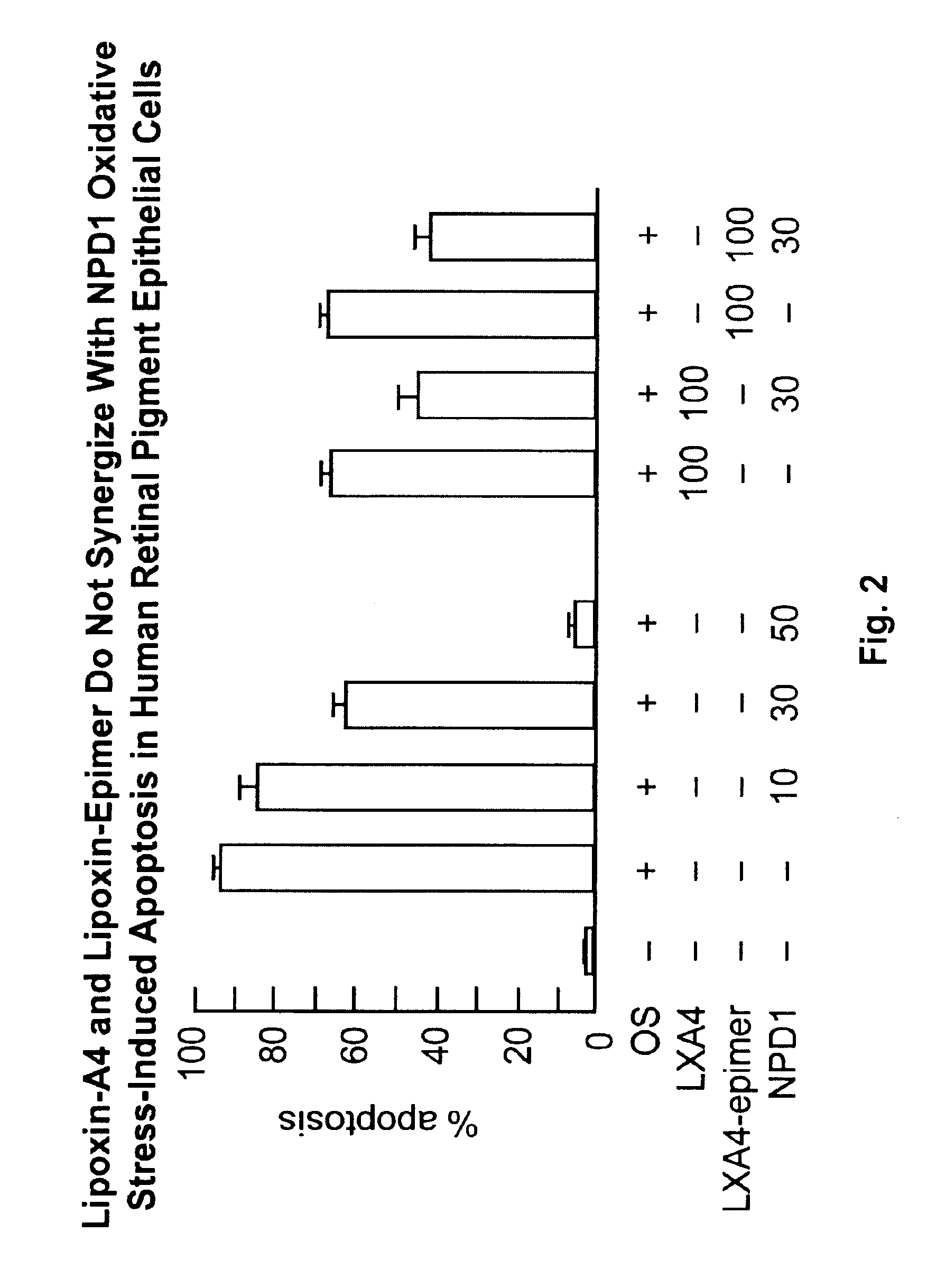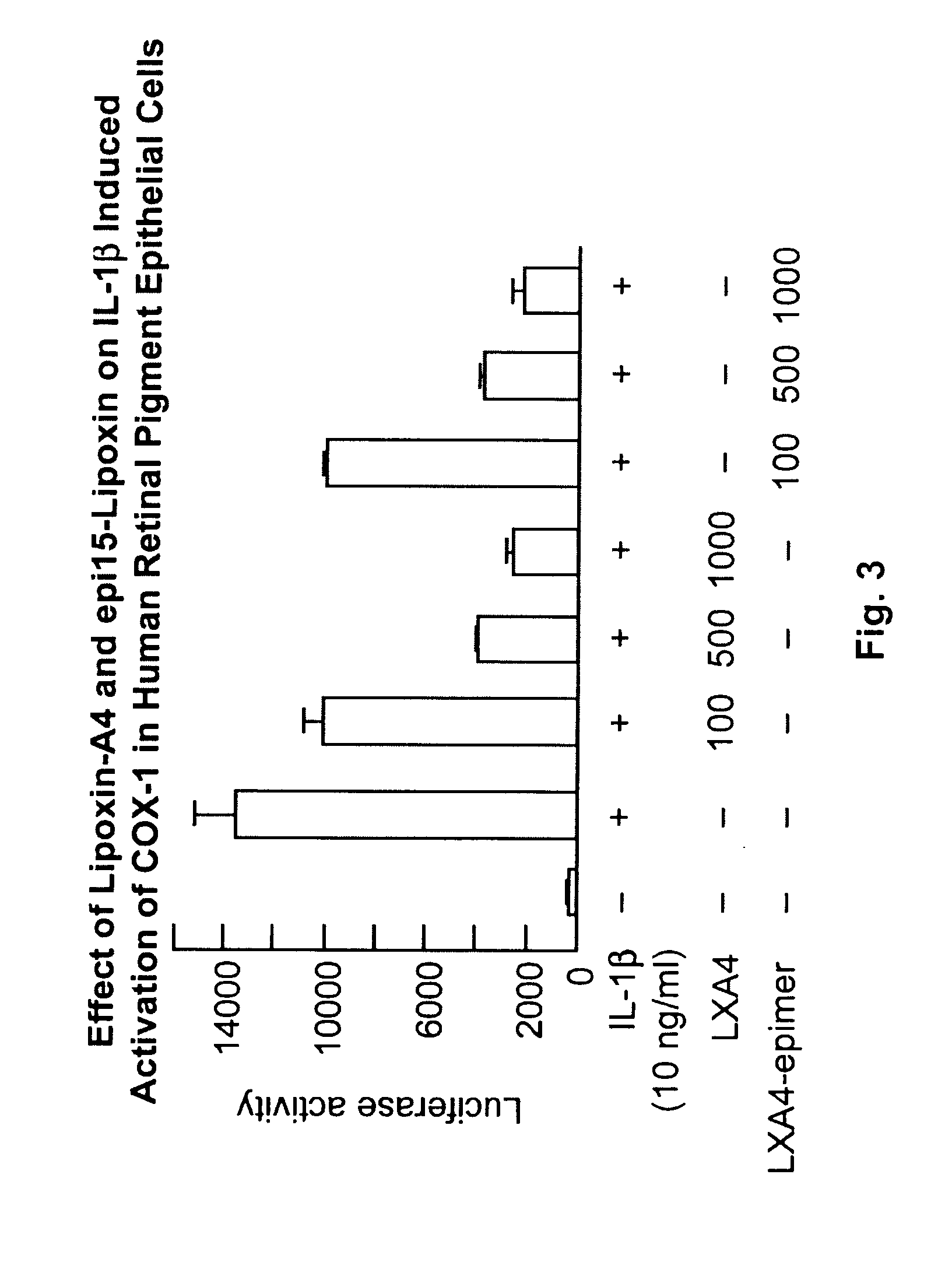Lipoxin A4 Protection for Retinal Cells
- Summary
- Abstract
- Description
- Claims
- Application Information
AI Technical Summary
Benefits of technology
Problems solved by technology
Method used
Image
Examples
example 1
Lipoxin A4 And Lipoxin A4 Epimer 15 Mediated Inhibition f Apoptosis Induced By Oxidative Stress In RPE
[0015]ARPE-19 cells (L. M. Hjelmeland, ATCC #CRL-2302) were grown and maintained in DMEM-F12 medium supplemented with 10% FBS and incubated at 37° C. with a constant supply of 5% CO2. ARPE-19 cells are spontaneously transformed human retinal pigment epithelial cells that conserve cellular biological and functional properties. All chemicals were purchased from Sigma Chemical Co. (St. Louis, Mo.) unless otherwise indicated.
[0016]ARPE-19 cells growing in DMEM-F-12 medium for 72 h were serum starved for 8 h before induction of oxidative stress, as described in P. K. Mukherjee et al., “Photoreceptor outer segment phagocytosis attenuates oxidative stress-induced apoptosis with concomitant neuroportectin D1 synthesis,” PNAS, vol. 104, pp. 13158-13163 (2007). Oxidative stress was introduced by TNF-α (10 ng / ml) and H2O2 (600 uM) for 14 h and challenged with different concentrations of eithe...
example 2
Lipoxins And NPD1 Effect On Apoptosis Inhibition Induced By Oxidative Stress In RPE
[0018]The growth of RPE cells, serum starvation, and induction of apoptosis were the same as described above in Example 1 and in Mukherjee et al., 2007. To test for a synergistic effect between lipoxin A4 and neuroprotectin 1 (NPD1), the oxidative-stressed RPE cells were treated with NPD1 (30 nM) and with lipoxin A4 or its analog (100 nM) for 14 h as indicated in FIG. 2. The percent apoptosis is expressed as described above in Example 1 as a percentage of the Hoechst positive cells.
[0019]As shown in FIG. 2, the results indicate that an additive effect of both lipoxins and NPD1 was found in this experiment. This indicates that the actions of NPD1 and lipoxins are mediated through different receptors and pathways. Thus, the effect of NPD1 when added with either lipoxin A4 or its analog is additive, and both would be useful in protecting RPE cells from apoptosis.
example 3
Lipoxin A4 And Lipoxin A4 Epimer 15 Inhibited The Interleukin-1-β Induced COX-2-Promoter Construct In RPE
[0020]COX-2 is a proinflammatory protein that participates in RPE cell injury. ARPE-19 cells were grown over night in six well plates and then transfected with huCOX-2-LUC (−830) promoter construct (5 ug) for 24 h. Transfected cells were serum starved for 8 h before the addition of IL-1β (10 ng / ml). IL-1β treated cells were challenged with 100 nM, 500 nM, and 1000 nM concentrations of lipoxin A4 and lipoxin A4 epimer 15 for 14 h. Cells were then harvested, and luciferase assays were performed using luciferin as substrate.
[0021]As shown in FIG. 3, the results indicate that both lipoxin A4 and lipoxin A4 epimer 15 inhibit IL-1β mediated induction of COX-2 promoter construct in RPE cells in a concentration-dependent manner. The lowest inhibition of 35% was observed at a concentration of 100 nM for both lipoxin A4 and lipoxin A4 epimer 15, and the highest was observed at 1000 nM.
[00...
PUM
| Property | Measurement | Unit |
|---|---|---|
| Composition | aaaaa | aaaaa |
| Stress optical coefficient | aaaaa | aaaaa |
Abstract
Description
Claims
Application Information
 Login to View More
Login to View More - R&D
- Intellectual Property
- Life Sciences
- Materials
- Tech Scout
- Unparalleled Data Quality
- Higher Quality Content
- 60% Fewer Hallucinations
Browse by: Latest US Patents, China's latest patents, Technical Efficacy Thesaurus, Application Domain, Technology Topic, Popular Technical Reports.
© 2025 PatSnap. All rights reserved.Legal|Privacy policy|Modern Slavery Act Transparency Statement|Sitemap|About US| Contact US: help@patsnap.com



